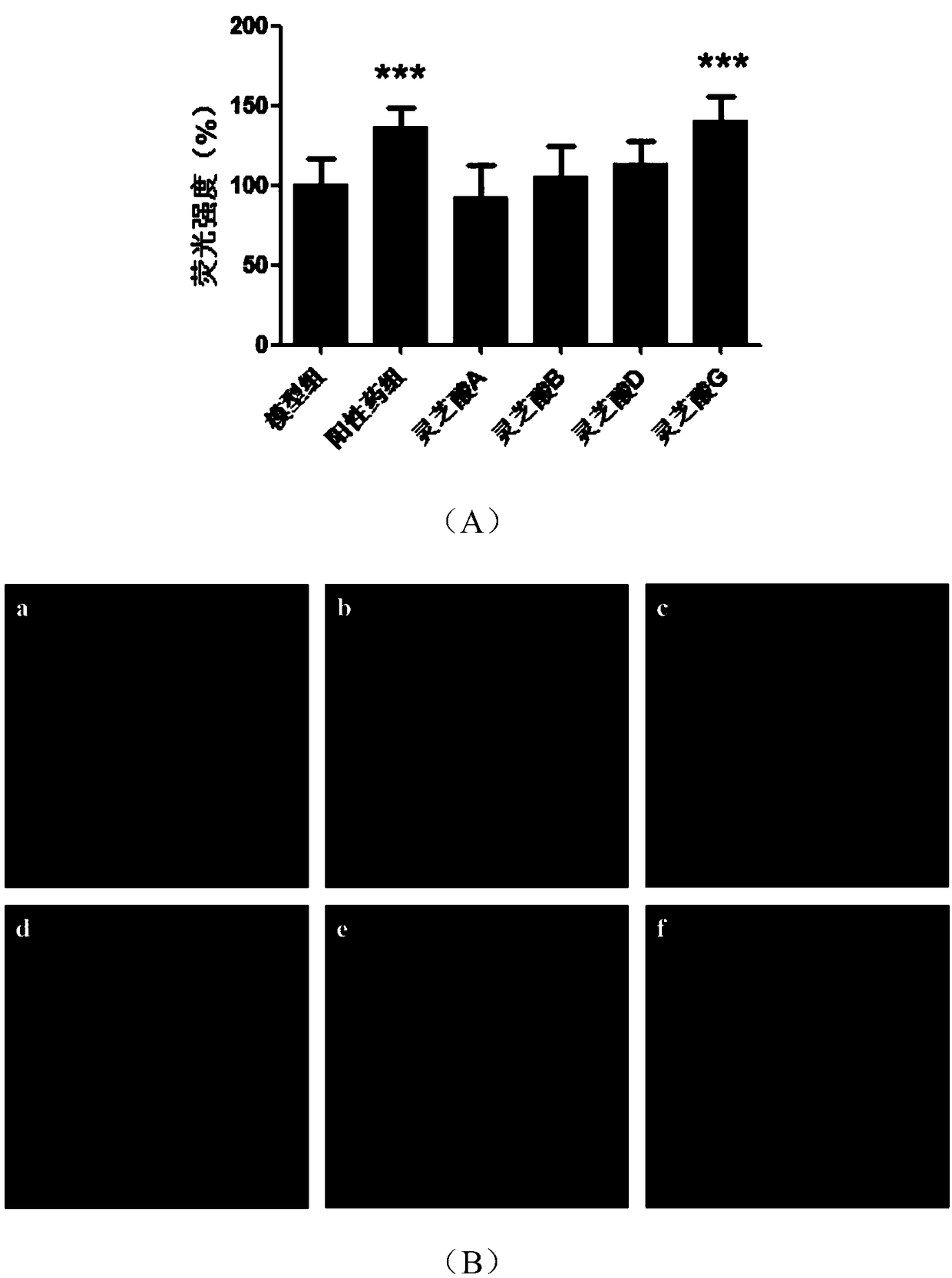Application of ganoderic acid G to neurodegenerative diseases
A neurodegenerative, ganoderma lucidum acid technology, applied in the field of medicine, can solve problems such as end-of-drug phenomenon, switching phenomenon, neuronal cell apoptosis, etc.
- Summary
- Abstract
- Description
- Claims
- Application Information
AI Technical Summary
Problems solved by technology
Method used
Image
Examples
Embodiment 1
[0020] Example 1: Antagonistic effect of ganoderma acid G on 6-OHDA-induced dopamine neuron toxicity in Caenorhabditis elegans
[0021] 1. Escherichia coli OP50 cultivation and preservation
[0022] Cultivation of OP50 strain: Use an inoculation loop to dip a small amount of OP50 bacterial solution (purchased from Caenorhabditis Genetics Center, CGC), inoculate and streak on solid LB medium, and culture overnight at 37°C. Single clones on solid medium were picked, inoculated in liquid LB medium, and shaken overnight at 37°C and 200rpm. Bacteria can be stored at 4°C until use.
[0023] Pay attention to maintain aseptic operation in the above steps. The bacteria solution stored at 4°C was re-streaked every 7 days to obtain single clones to ensure the viability of the bacteria.
[0024] 2. Preparation of standard Caenorhabditis elegans growth culture plate (Nematode Growth Media, NGM)
[0025] Preparation of NGM culture plate: Weigh 3.0g sodium chloride, 2.5g peptone, and 17g...
Embodiment 2
[0042] Example 2: Inhibitory Effect of Ganoderma Acid G on α-Synuclein in Caenorhabditis elegans Muscle
[0043] 1. Inhibitory effect of ganoderma acid G on α-synuclein in nematode muscle
[0044] Transgenic Caenorhabditis elegans NL5901 ([unc-54p::aLphasynucLein::YFP+unc-119(+)]) (purchased from Caenorhabditis Genetics Center, CGC) expresses α-synuclein on muscle and is linked to YFP, The stronger the fluorescence intensity, the more α-synuclein.
[0045] See Example 1 for the cultivation and synchronization treatment methods of Caenorhabditis elegans. The medication board is divided into model group, positive medicine group, ganoderma acid A intervention group, ganoderma acid B intervention group, ganoderma acid D intervention group and ganoderma acid G intervention group. No drug was added to the model group, 10 μM levodopa was added to the positive drug group, and corresponding drugs were added to each ganoderma acid intervention group, with a final concentration of 30 μ...
Embodiment 3
[0050] Example 3: Inhibitory effect of ganoderma acid G on α-synuclein on Caenorhabd nerve
[0051] 1. Inhibitory effect of ganoderma acid G on α-synuclein in UA44 nematode neurons
[0052] Transgenic Caenorhabditis elegans UA44 (baInl1[Pdat-1::α-syn high, Pdat-1::gfp]) (purchased from Caenorhabditis Genetics Center, CGC) expresses α-synuclein on dopaminergic nerves and is linked with The more GFP and α-synuclein, the more damage the nematode neurons will cause, and the weaker the fluorescence intensity will be.
[0053] See Example 1 for the cultivation and synchronization treatment methods of Caenorhabditis elegans. The medication board is divided into model group, positive medicine group, ganoderma acid A intervention group, ganoderma acid B intervention group, ganoderma acid D intervention group and ganoderma acid G intervention group. No drug was added to the model group, 10 μM levodopa was added to the positive drug group, and corresponding drugs were added to each gan...
PUM
 Login to View More
Login to View More Abstract
Description
Claims
Application Information
 Login to View More
Login to View More - R&D
- Intellectual Property
- Life Sciences
- Materials
- Tech Scout
- Unparalleled Data Quality
- Higher Quality Content
- 60% Fewer Hallucinations
Browse by: Latest US Patents, China's latest patents, Technical Efficacy Thesaurus, Application Domain, Technology Topic, Popular Technical Reports.
© 2025 PatSnap. All rights reserved.Legal|Privacy policy|Modern Slavery Act Transparency Statement|Sitemap|About US| Contact US: help@patsnap.com



